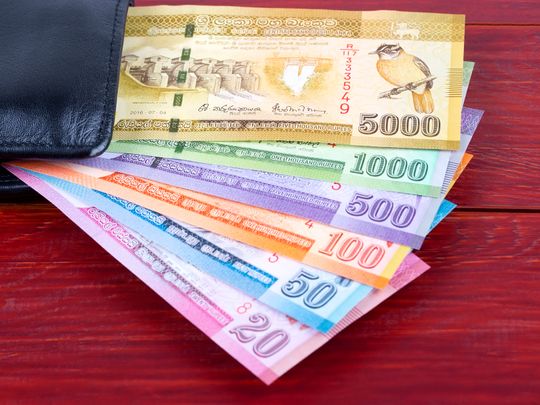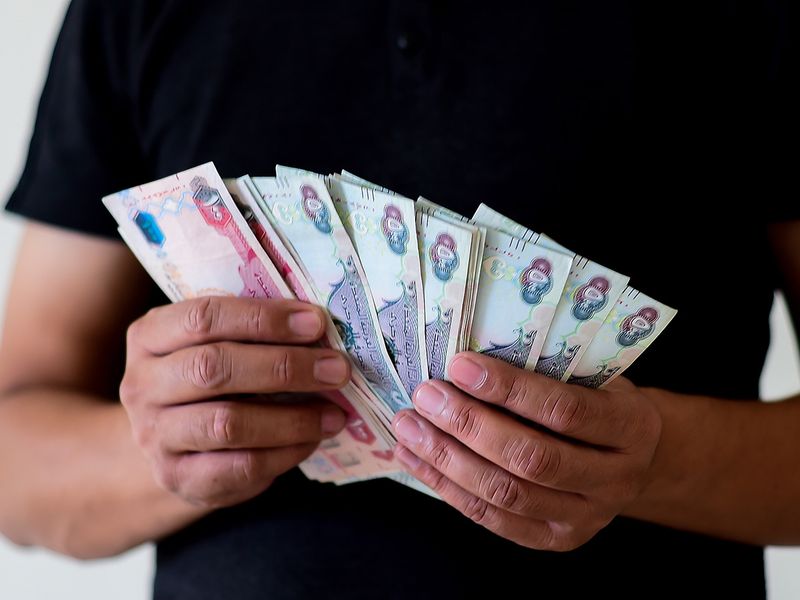
Sri Lanka's central bank devalued the country's rupee by up to 15 per cent, a move that will benefit the country's expats overseas. Analysts say this was likely done to encourage remittances, a major source of foreign exchange in the South Asian island country.
Late on Monday, the Central Bank of Sri Lanka (CBSL), with immediate effect, set an exchange rate limit of 230 rupees per dollar compared to a limit of 200-203 that had prevailed since October.
Analysts opine how this is one of the several steps needed to obtain an International Monetary Fund loan programme that would boost currency reserves and help negotiate debt restructuring.
Sri Lanka's foreign reserves fell to $2.36 billion at the end of January and it is due to repay about $4 billion in debt in the rest of 2022, making it likely that government will seek IMF assistance.
As yet, Sri Lanka has not formally sought talks on an IMF programme, an IMF official said, declining to be named.
"We believe this will support growth and assist us to face external challenges better," Cabinet spokesman and Media Minister Dullas Allahaperuma told reporters on Tuesday. He did not say whether the government would approach the IMF.
"Currency flexibility is something IMF will see as a pre-condition to a program, so it makes future negotiations with them easier," Thilina Panduwawala, Head of Economic Research at Frontier Research said.

Plans unclear
"But without clear communication on intention for IMF program and debt restructuring, it does not mean much right now." Analysts said the devaluation was insufficient by itself, and the government needed to take additional policy steps, including increasing taxes to shore up public revenues and adjusting fuel prices.
"The recent 100 bps hike in key policy rates combined with the exchange rate correction are key stepping stones for the country to move towards an IMF led restructuring program," Asia Securities said in its latest Macro Outlook update.
"Given the relatively unsustainable level of debt as outlined by the IMF during its recent Article IV assessment, we continue to factor a restructuring during the year." Some analysts said the central bank should have depreciated by more to achieve to boost remittances significantly, and some expected an even bigger devaluation of up to 25% later in the year.
"Hawala" traders, who transfer funds informally between countries without physically moving money, adjusted their rate to 270 rupees per dollar after the CBSL announcement, having previously offered a rate around 255 rupees, market sources said.
Umesh Moramudali, an economist attached to the University of Colombo, said the exchange rate limit should have been set at about 250-260 rupees per dollar to bring in more remittances.
"This move could help exporters but it is too little, too late for migrant workers who are now used to higher curb rates and are unlikely to shift to bank rates," Moramudali said.
CBSL called on the government to incentivise remittances and foreign investments in its latest monetary policy announcement.
In December, CBSL announced a host of measures including giving an additional 10 rupees per dollar as an incentive but this had limited impact with remittances dropping 61.6% in January to $259 million from $675 million a year earlier.
40-year low
The Sri Lankan rupee posted its biggest single-day decline in more than 40 years, after a continued drain in the nation’s international reserves forced the central bank to relax its grip on the currency.
The currency slid 12 per cent to a record low of 227.86 against the dollar, following the Central Bank of Sri Lanka’s move to effectively devalue the currency on Monday. The 12 per cent decline was its biggest since November 16, 1977, when the currency slumped more than 40 per cent.
“There was no choice other than to allow the exchange rate to move,” said Udeeshan Jonas, chief strategist CAL Securities, of the central bank’s guidance capping the rupee at 230 versus the dollar. The central bank had imposed a tight 201-203 range against the dollar for the currency since October to rein in Asia’s fastest inflation rate.
The central bank’s decision is positive for listed exporters, Jonas said, adding that most of the country’s importers were already buying dollars between the 230-240 range.
The central bank’s relaxation of the currency peg will help the South Asian nation free up dollars to pay for essential imports as well as aid the country in paying for a $1 billion bond due in July. Sri Lanka’s foreign-exchange stockpile fell to $2.31 billion in February, its lowest level since November 2021. It was at $2.36 billion in January.
“We have given a guidance” on the rupee level, Central Bank Governor Ajith Nivard Cabraal said by phone Tuesday, adding that the new exchange rate policy is effectively a “float” of the rupee.
“We stand ready to take additional policy measures,” he said. “Global conditions have been quite volatile. We need to ensure that some measures are taken to respond to that volatility as well.”








